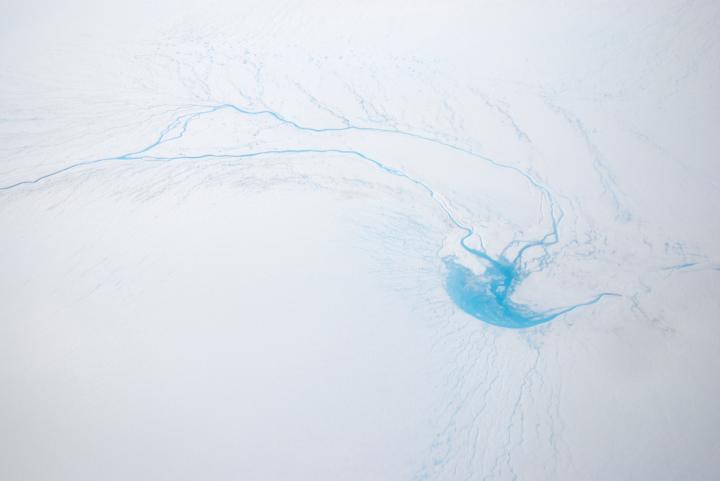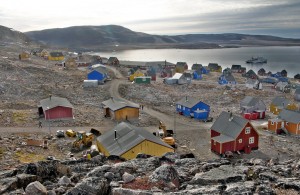
Scientists at Cornell University have discovered that meltwater from the surface of an ice cap can seep downward and become trapped beneath it, adding heat to the bottom of the cap. It’s the first time that researchers have seen the potential for atmospheric warming to affect glaciers from above and below.
The Cornell team, led by Earth and Atmospheric Sciences researcher Michael Willis, said that the warmer water could make the ice sheet slide faster over ground and change how the ice responds to the changing climate. They conducted the study in Greenland and published the results Jan. 21 in the journal Nature.
The Greenland ice sheet makes up 80 percent of the island’s land mass, and previous studies have shown that the ice sheet is melting at a faster fate. Willis said his study was sparked in 2012, when he noticed a 70-meter-deep hole in Greenland’s ice cap, a remnant of a rare subglacial lake.
“Between 2012 and 2014, Willis watched as summer meltwater on the surface of the ice made its way down cracks around the hole and refilled the empty lake basin at the base of the ice cap. When water was flowing on the surface, the subglacial lake filled. When water stopped flowing on the surface, the subglacial lake stopped refilling.
“Each summer scientists see bright blue streams form on the surface of Greenland as warm air melts the ice sheet. What happens to this water when it disappears into cracks in the ice has remained a mystery.
‘This discovery that water can be stored in lakes beneath the ice shows how the plumbing on the surface is linked to the plumbing at the base,’ said co-author Robin Bell.”
The refilling tells scientists that the ice cap’s resilience has reached a tipping point.
“‘We can actually see the meltwater pour down into these holes and then watch these subglacial lakes drain out and fill up again in real time. With melting like that, even the deep interior of the ice sheet is going to change. If enough water is pouring down into the Greenland Ice Sheet for us to see the same subglacial lake empty and refill itself over and over, then there must be so much latent heat being released under the ice that we’d have to expect it to change the large-scale behavior of the ice sheet,’ said study co-author Michael Bevis.”

The study was conducted at the Flade Isblink ice cap in northeastern Greenland. I’m told that another place in Greenland where glacial change is obvious is Ittoqqortoormiit, formerly Scoresbysund. William Scoresby named the area in 1822, when he charted more than 400 miles of the eastern coast of Greenland. Ittoqqortoormiit is a hotspot for earth scientists who say that glaciers appear to be sliding toward the sea at faster rates, a result of atmospheric warming.